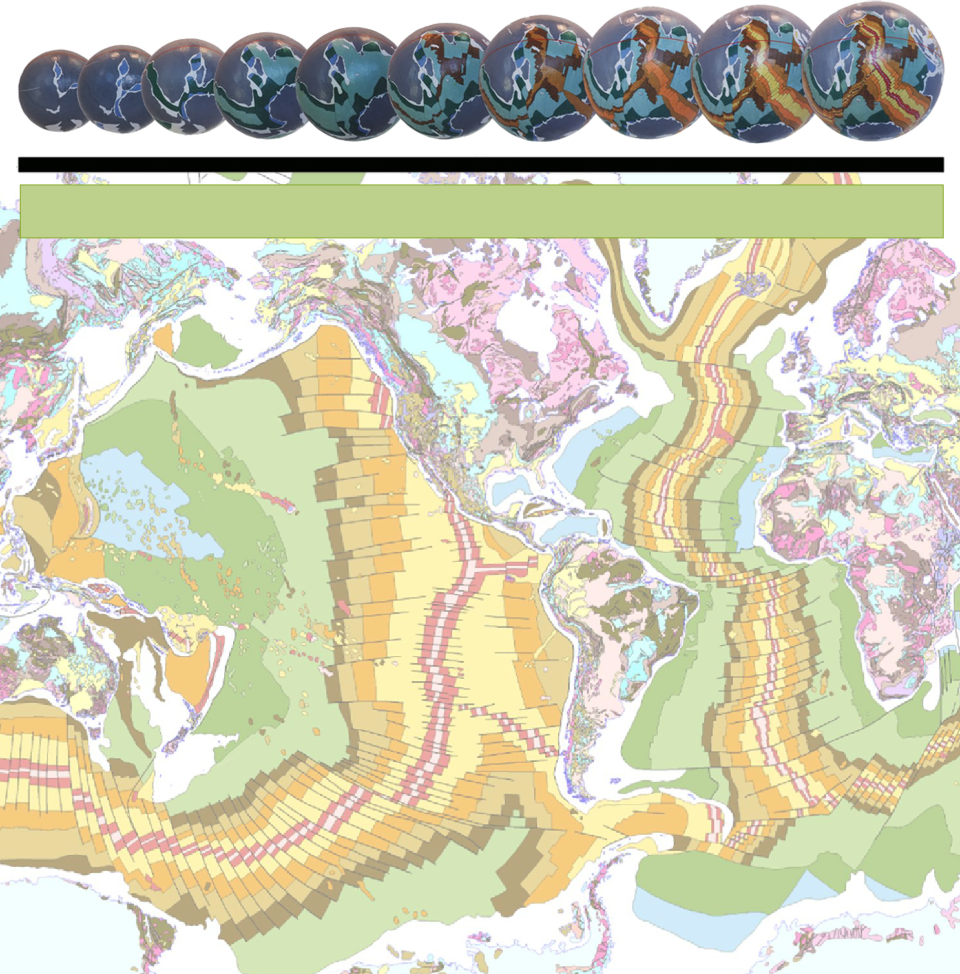

KLAUS VOGEL
In 1983 Klaus Vogel published a comprehensive set of scaled small Earth models, or "terrella"—meaning small Earth—as he referred to them. These models were at various diameters, including a unique representation of a 55 percent reassembled globe inside a transparent plastic sphere of the present-

Vogel’s 1983 "terrella" models at various stages of expansion commencing on the far left with a continental reconstruction, without continental shelves, at 40 percent of the present Earth radius. A 55 percent radius model is also shown within a transparent sphere of the present day Earth at the right, demonstrating a radial motion of Earth expansion.
This is a very important point to take note of because all previous model makers, while having enough foresight and courage to remove seafloor crusts, were faced with the less than envious task of having to visually fit-
Also, the prevailing geological viewpoint during the 20th century, and to a lesser extent still remaining today, was that each of the continental crusts acted as rigid bodies. In other words, the crusts were considered to be solid, immovable rock incapable of any form of distortion other than fragmentation due to faulting and earthquake activity. The early small Earth model makers were then faced with the additional fixation that continental crusts were brittle and hence needed to be fragmented like an egg shell in order to be reassembled on a smaller size globe when moving back in time.
Vogel was an engineer, so he was not as fixated on geological protocol as most geologists at the time were. Because of this, he was able to construct stunning models with a high degree of precision. Each of his models demonstrated a greater dispersion of the southern continents, compared to those in the northern hemisphere, and he also noted a marked westward movement of all the northern continents relative to the southern continents.
Vogel’s models demonstrated that, in general, the continents tended to move out radially from their ancient positions to reach their modern positions. Vogel commented that this is a "...odd coincidence for any theory except that of expansion of the Earth."